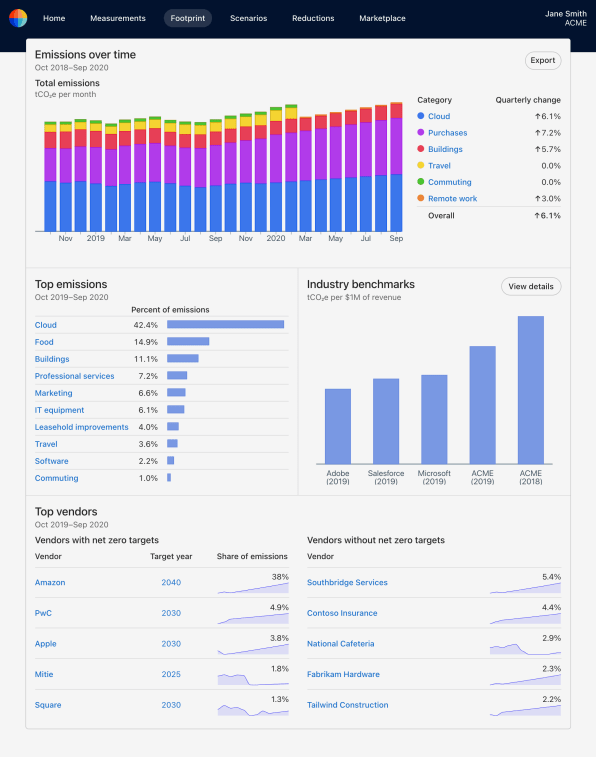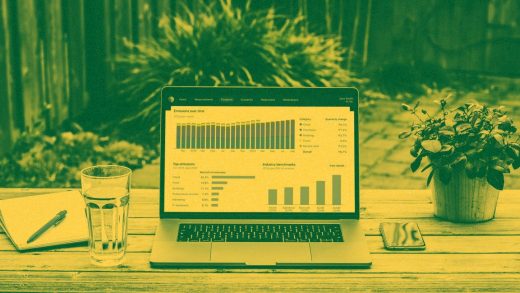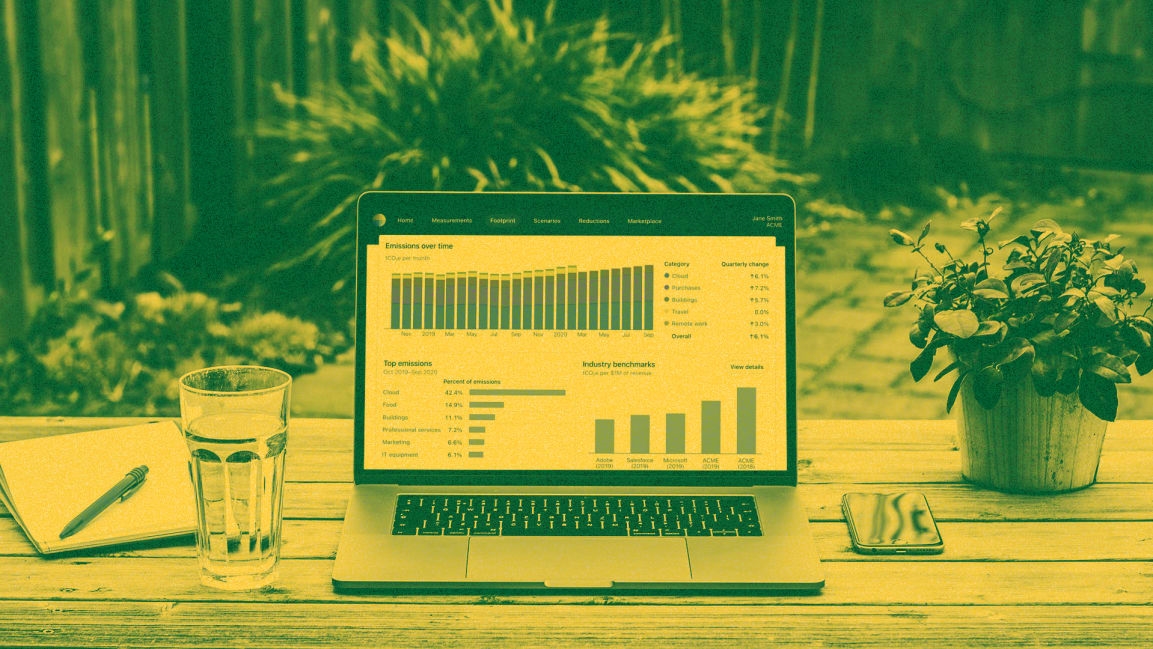This tool helps companies make sense of their carbon footprint so it’s easier to cut
“It really was this two-year journey that ran through working with consulting firms who gave us spreadsheets and PDFs to try to measure our footprint,” says former Stripe employee Taylor Francis. “We bought offsets that we were told were high impact, but we weren’t entirely sure where that money was actually going. We eventually ended up launching a program, now Stripe Climate, that we were really proud of. But it just took a long way to get there.”
Francis and two other Stripe employees ended up deciding to leave to build a new platform, called Watershed, to help other companies cut carbon faster. The tool focuses on action, not simply counting emissions. “A big part of our thesis is that it’s not enough to just observe and report your carbon graph,” says Francis, one of the startup’s cofounders. “We want to enable companies to actually bend their carbon graph. There’s kind of too much out there that enables you to publish your sustainability report once a year, but not enough to actually enable companies to take the concrete steps that help you cut carbon.”

Companies start by uploading data about their core business—Sweetgreen, for example, started by adding a list of its food purchases. Square, another customer, started with a bill of materials for its hardware. Stripe uploaded its AWS cloud bill. “They’re uploading these data points that are readily accessible because they’re core business operations,” he says. Watershed then turns that data into hard carbon numbers. The tool searches through any published carbon reporting from suppliers, and when detailed data isn’t available, Watershed works with a company to gather more information. Sweetgreen, which plans to become carbon neutral in six years, dove into details about cattle feed and manure handling at the farms that sell it vegetables. All of the data goes into platform so it can also help future users have more accurate footprints.
With a full carbon footprint in hand, companies can identify the places where it’s possible to cut the most carbon. Many start with switching to renewable energy, something that can be done through the tool. “Next up is looking at your supply chain and flexing whatever leverage you have,” says Francis. “That’s where it gets different for every company. Square is redesigning hardware products with an eye on carbon and sourcing from suppliers who are prioritizing clean electricity. Sweetgreen is redesigning its menu with an eye on carbon, and sourcing from suppliers who are lowering the greenhouse gas emissions of agricultural production. Square is thinking about BitCoin. Airbnb and Doordash, respectively, are thinking about the carbon impact of their platforms and the homes and vehicles that are on those platforms.”
In many cases, viable solutions already exist—say, clean energy and electric vehicles—and companies simply need to adopt them. In other cases, companies can invest to help support nascent technologies that are still in development. To make meaningful commitments to net zero carbon, companies need to reduce emissions radically throughout their supply chains, Francis says. For emissions that truly can’t be eliminated yet, companies can turn to well-vetted carbon removal projects as offsets. Watershed also curates a list of offsets.
As a final step, the tool helps with carbon reporting. “In the U.K., large companies, public and private, are going to be required to report their carbon footprint starting next year,” he says. “It’s happening in the rest of Europe as well. The SEC is going to publish guidance on making that obligatory in the U.S. later this year. It’s coming from regulators. It’s coming from investors like BlackRock, it’s coming from customers, it’s coming from employees. And all that adds up to this imperative that if you are a large company in 2021, climate governance is just a thing you have to do to be a well run organization.”
Since launching in February, the startup has more than tripled the number of customers it’s working with, including adding Everlane and Shopify. The companies now represent 10 million metric tons of carbon production; all are aiming to get to zero emissions. Watershed wants to eventually hit a goal of removing 500 million metric tons of carbon a year. “Decarbonization is the big economic transition of the next decade,” Francis says. “Companies are on the front lines. They’re the ones that make the decisions. And we’re trying to build the software and marketplace layer that enables companies to navigate that transition effectively.”
Correction: The subhead of this article originally listed Spotify as a customer, rather than Shopify.
(46)



